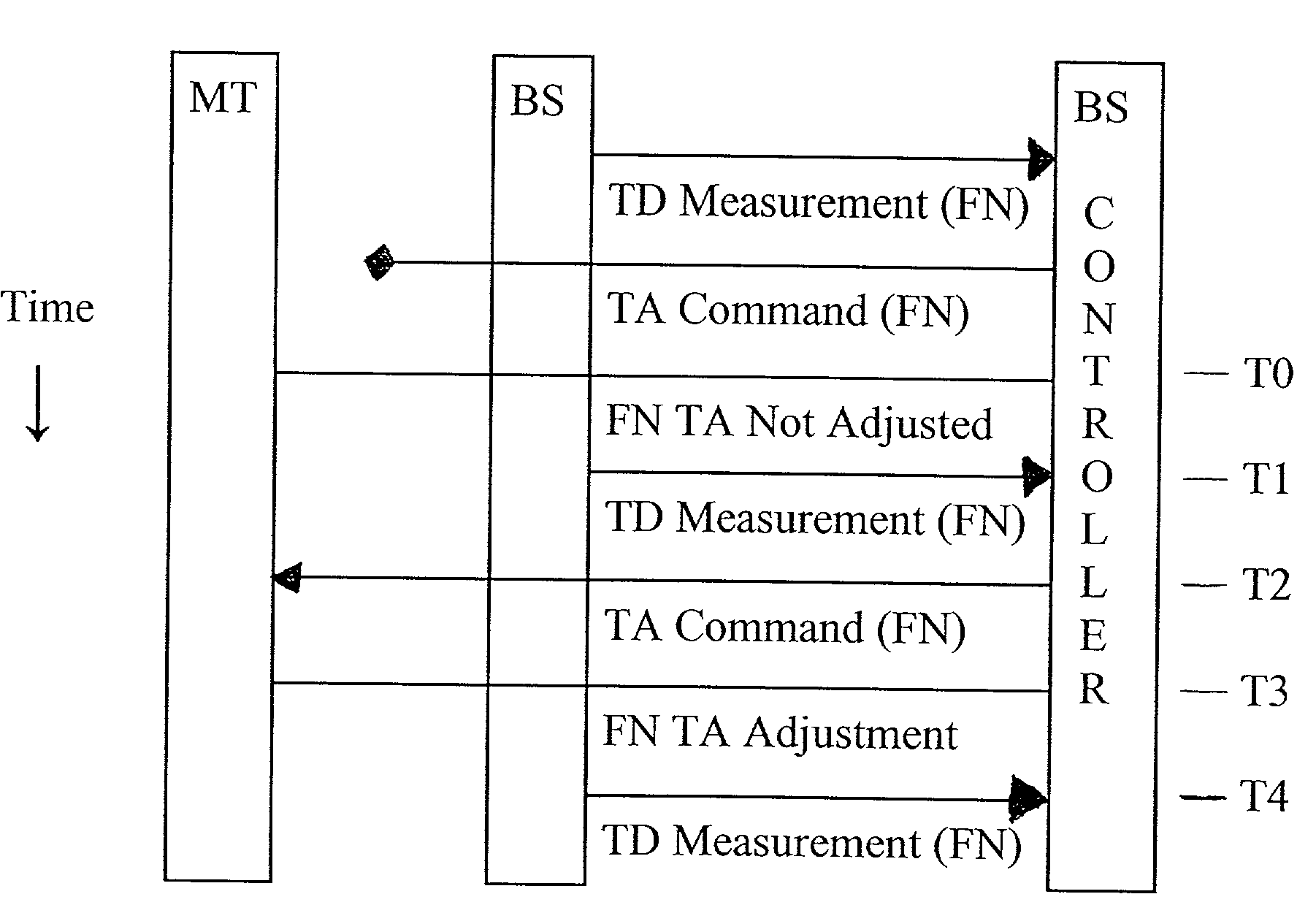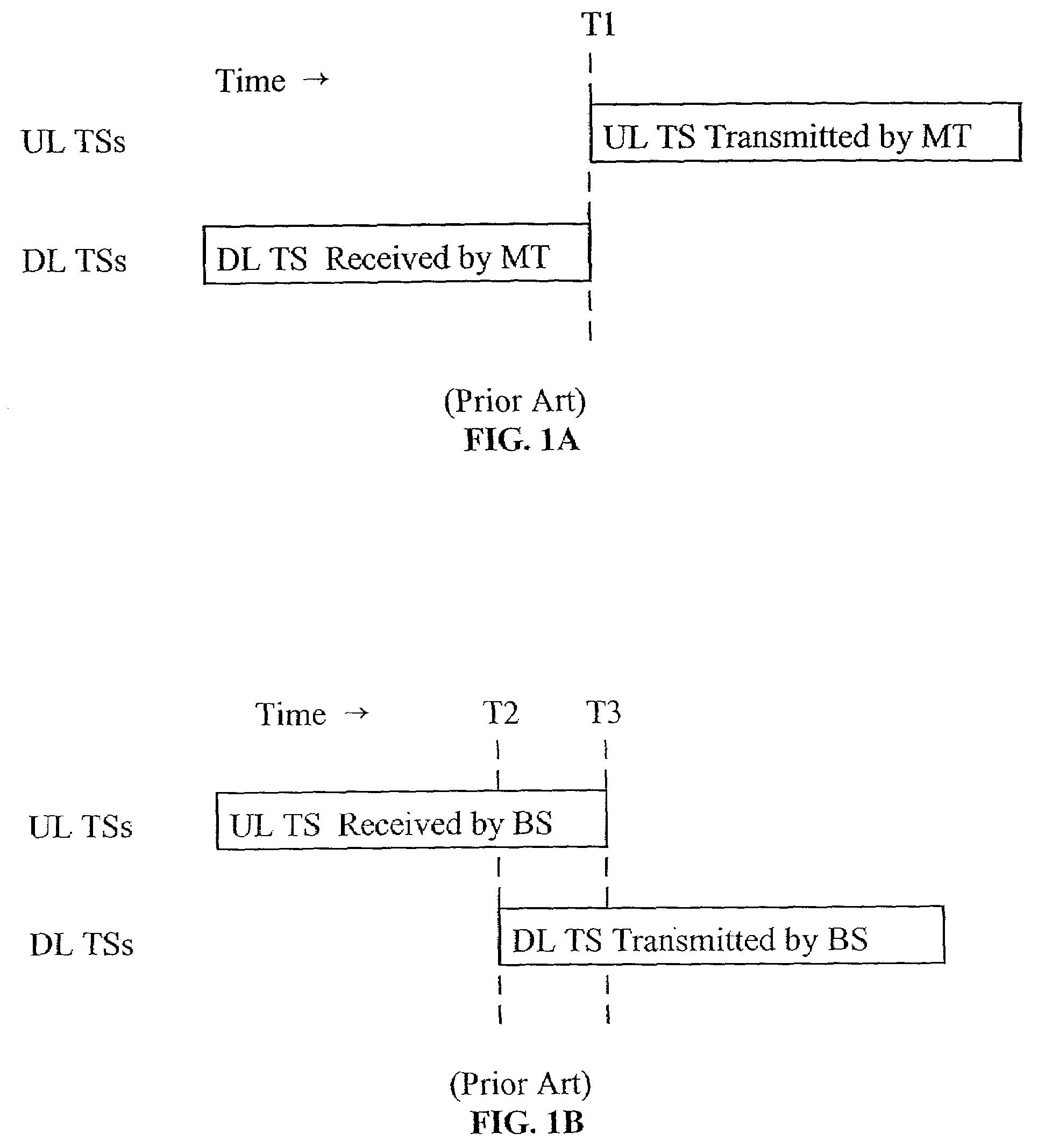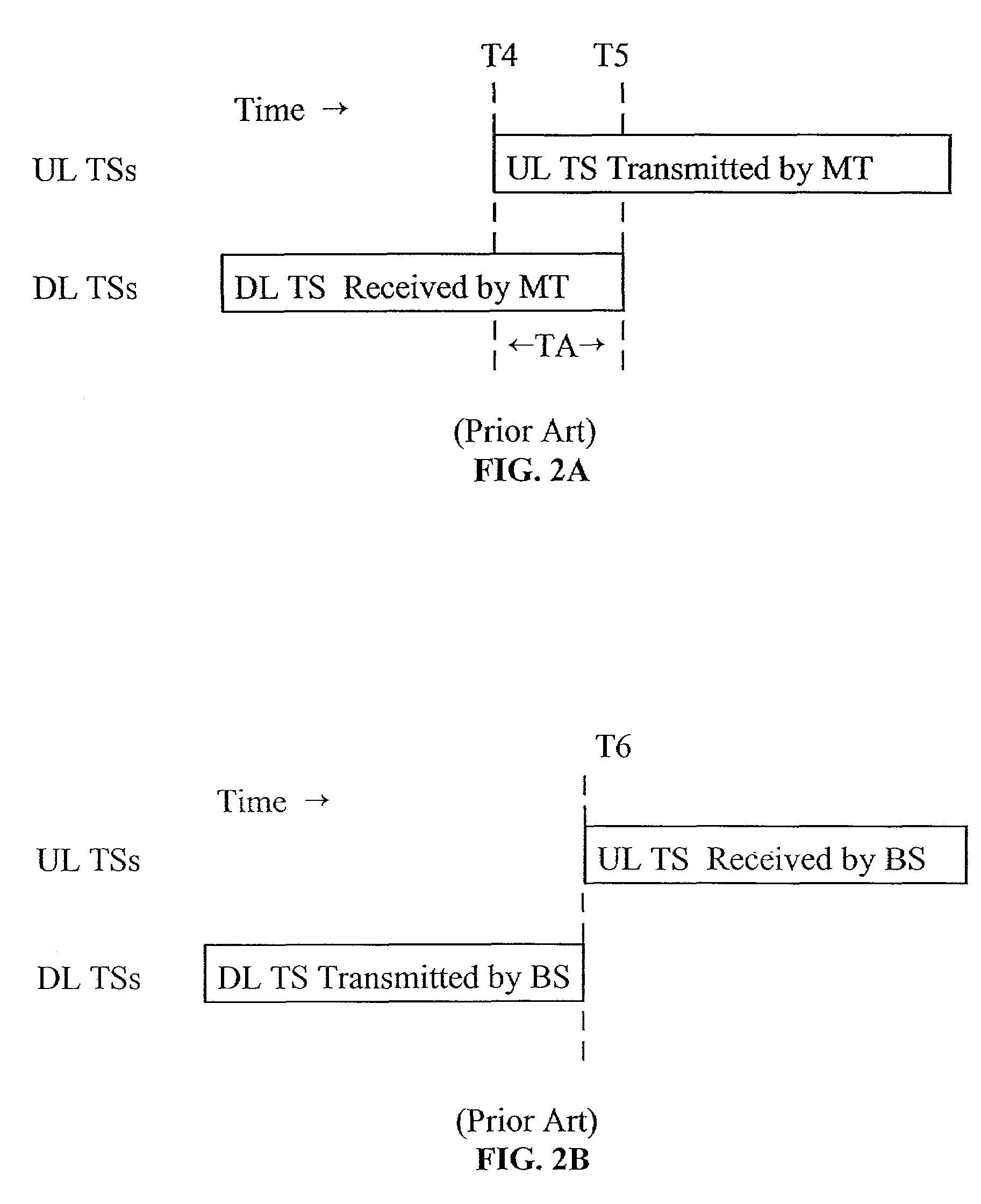Synchronization of timing advance and deviation
a timing advance and deviation technology, applied in the field of digital communication systems, can solve the problems of difficult coordination of ta adjustment in the mt and td measurement in the bs to a specific sequential radio frame, radio transmission propagation delay relative, command not to be received, etc., to facilitate a method of geographical positioning
- Summary
- Abstract
- Description
- Claims
- Application Information
AI Technical Summary
Benefits of technology
Problems solved by technology
Method used
Image
Examples
Embodiment Construction
)
[0046]The embodiments will be described with reference to the drawing figures where like numerals represent like elements throughout.
[0047]Referring to FIG. 9, there is illustrated a communication system 10 comprising a plurality of base stations (BSs) 12 which conduct wireless communication with mobile terminals (MTs) 14. Each BS conducts wireless communications with MTs in a geographic cell, which cell areas normally have some overlap. Where an MT 14 is in an overlap area, bi-directional communication is generally conducted by the BS having the strongest signal link with the MT. Where a second BS begins to have a stronger signal link, “hand off” of the communication occurs. Desired parameters and procedures for effectuating “hand off” are well known in the art.
[0048]In a preferred system such as in accordance with 3G wireless protocols, node Bs 16 are provided in a physical or logical connection with the one or more BSs. A radio network controller (RNC)17, to which the node Bs 16...
PUM
 Login to View More
Login to View More Abstract
Description
Claims
Application Information
 Login to View More
Login to View More - R&D
- Intellectual Property
- Life Sciences
- Materials
- Tech Scout
- Unparalleled Data Quality
- Higher Quality Content
- 60% Fewer Hallucinations
Browse by: Latest US Patents, China's latest patents, Technical Efficacy Thesaurus, Application Domain, Technology Topic, Popular Technical Reports.
© 2025 PatSnap. All rights reserved.Legal|Privacy policy|Modern Slavery Act Transparency Statement|Sitemap|About US| Contact US: help@patsnap.com



